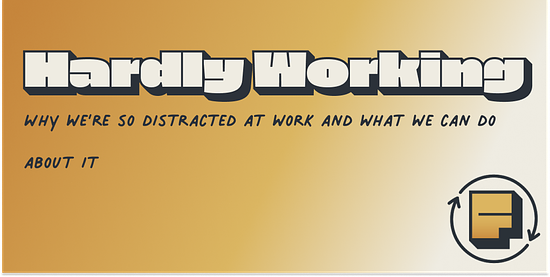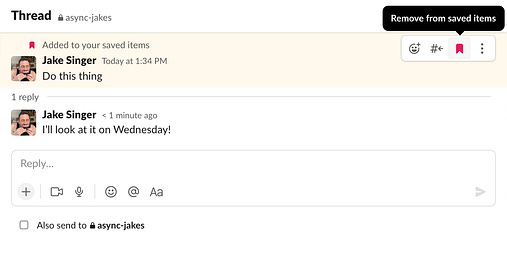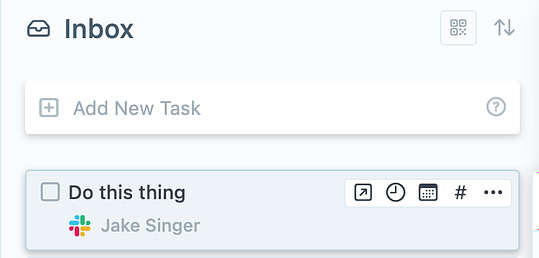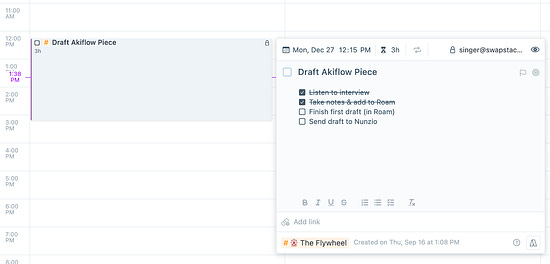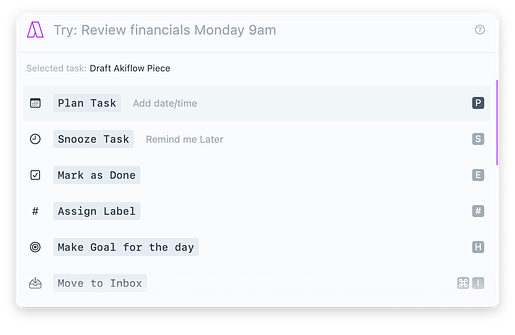The Flywheel - Hardly Working
Welcome to the ~600 new subscribers since my last post (especially those in India! Hi SOIC!) If you are reading this but are not yet subscribed to The Flywheel, click below to join 5,023 of your smartest friends who receive each new post in their inbox. Today’s newsletter is brought to you by Fitt Insider, a media platform, jobs board, and investment fund dedicated to the business of fitness and wellness. From health optimization to longevity o connected fitness, technology is impacting every aspect of well-being. A trusted resource for insights and analysis, Fitt Insider creates in-depth reports on trends and companies, detailing everything from mental fitness to brands like WHOOP, Peloton, Levels, and Strava. Fitt Insider has some of the smartest analysis about both the fitness and wellness industries. Designed to help operators stay informed and make better decisions, the platform is also valuable for individuals with a personal interest in the space, anyone hoping to break into the industry, or professionals in related sectors. To learn more and access 150+ free reports: A Mad Distracted WorldThursday. Time to make this week count! Open Slack. What's my team up to? Check email. Cool, some stuff to process here. Snooze this one, reply to this, assign to my cofounder. Nice, inbox zero! I'm a legend. How's the business doing? I turned off sounds and notifications for text messages, no distractions here friend! Cool, lots of action, should find out who the most active users are this week. What's up in my Linear inbox? Check email. Oh wait, I just checked my email. Inbox zero baby! OK back to Linear - 2 tasks have comments. Nice! I should remember to respond to those. I wonder if any new investors have committed $ on AngelList. Check text messages app. Slack? Nothing new? OK, Notion might have some notifications, let's see. Did anyone like my tweet from last night? No? Twitter's probably down. Another AWS problem? Check status logs. Check Slack, anybody talking about this? Check email. Quiet morning. 3 WhatApp's from last night to respond to. How's my Robinhood portfolio today? Let me check email real fast. Any new action on Swapstack? Check text messages app. Check email. What's up in Slack? Does this scene sound familiar to you? If so, then, like me, you might be highly distracted. More often than I’d like to admit, sitting down to work looks a lot like the cycle above. Between the compulsive checking of various inboxes and the notifications that help me catch whatever falls through the cracks, it's a true wonder I've ever gotten any work done in my entire life. I know, I know. We Are Distracted is far from a bold and original claim: this is a well-known issue facing many of us in the smartphone era. Distraction joins widespread anxiety and the crumbling of our democracy as commonly cited symptoms of social media use. At this point, it's well established that constant smartphone use is leading our brains to become more distracted, our minds to be less open to different viewpoints, and our hearts to feel lonelier and more anxious. Smartphone overwhelm—or social media addiction, digital distraction, or whatever you want to call it—is a massive topic that I am becoming increasingly passionate about. I fear we, as a society, are in for a shock when we, some day, come to understand the true impacts of constant smartphone on the human brain (and in particular, the developing one). It’s a huge topic, and it’s too broad to tackle in one article. But there’s one aspect of the subject that often goes overlooked: the impact on us at work. What happens when a person who has been hooked by social media, conditioned to spend hours a day seeking dopamine hits on their phones, sits down to try to get some work done in the modern, increasingly remote, work environment? It doesn’t always end well. In this article, I’m going to suggest two different but related problems that arise in the workplace as a consequence of our modern tech products, and then dive a bit deeper into two tools I’ve recently begun incorporating into my life as a counteraction against these problems. In a month when TikTok passed Google to become the top website on the internet and Instagram to become the top app on our kids’ phones, it’s an opportune time to spend a few minutes thinking about these issues. Yalla. Problems in the BoardroomDopamine MonkeysThis part isn’t new. You’ve likely heard of dopamine, and how it relates to smartphone/social media use. This blog post from Harvard Medical School is a great basic introduction:
Smartphones provide a nearly endless stream of potential dopamine: a ‘positive social interaction’, or something resembling it, is always but a swipe away. As a result, we’re often mindlessly reaching for our phones without really knowing why and, if we cannot find our phone, we may feel a pang of anxiety. When we sit down to work, our brains don’t magically turn off this dopamine-craving. I’d suggest that our work apps have begun to serve a similar function to social media apps in feeding it. Checking Slack satisfies a similar part of my brain as checking Instagram. App developers know this, and are building products that fit into our expectations. Every popular work app has a mobile app replete with notifications and emoji reactions to everything. We have strong FOMO and don’t want to miss a single thing, and at work it’s no different. Outsourced EverythingI can’t remember the last time I went into (or ordered from) a restaurant without looking up its Google or Yelp reviews first. We have become totally reliant on external factors to tell us how to lead our lives. Where should I go? Check Google maps. What should I wear? Check Instagram shopping. What political opinions should I adopt? Check Twitter. I think there’s an analogue to this at work: What should I work on? It’s become easier and easier to outsource the answer to JIRA, Slack, Notion, or some other external source. It’s become easier to be busy, but harder to be productive. To work on the right things at the right time. These two issues combine into a double whammy, a trap that’s extremely easy for us to fall into. We have a compulsion to constantly check all of our work inboxes, and when we find unanswered messages there, we’re all too eager to fill our days responding to them. The trap is that we could become completely reactive to whatever happens to come up, and not nearly proactive enough, determining ahead of time what our priorities are based on some higher order, independent thinking. The same trap that faces us in our non-work world is coming for us at work too. A new wave of productivity apps is emerging that can help us avoid the trap. Less and MoreRecently I’ve become more motivated to make the digital tools in my life work for me instead of the other way around. In the rest of this piece, I’ll dive a bit deeper on two different but complementary tools that I’ve recently started incorporating into my life:
Digital MinimalismTl;dr: buy/borrow Digital Minimalism and read it. I intended to keep today’s piece focused on distracting workplace apps, but two things happened: (1) I read Digital Minimalism last week, and (2) I started writing this piece, and realized how connected the overall digital distraction world is to the topic I wanted to cover. So, I hope you’ll indulge this short book report and strong personal recommendation. The core thesis of Digital Minimalism is that new, smartphone based technologies (social media at the forefront, but also email, Slack, text messaging, etc) have been thrust upon us and we have allowed them unfettered access to our brains and attention spans. We justify our use of these technologies by emphasizing the value we may get out of these—Twitter is good for my career! Newport’s argument is that ‘I get value from it’ is an insufficient bar: the value needs to exceed the costs, and far too often it does not. The intro to Digital Minimalism focuses on the full extent of these costs, to help us with our own accounting. We’re all fighting a David vs. Goliath battle against smartphone addiction: as a natural outgrowth of their business models, companies spare no expense in finding new and novel ways—rooted in psychology—to keep us scrolling. This is lowercase ‘a’ addiction, not like drugs or gambling, but dangerous nonetheless. The main danger is in subtle shifts to how we relate to one another as humans and, as a result, a loss of fulfillment and meaning in our lives. We rarely, if ever, spend time alone with our thoughts, and we’ve replaced a meaningful chunk of our high-quality social interaction with low-fidelity bits of social feedback like likes and emoji reactions. Digital Minimalism goes into much more detail on the ramifications of these trends and makes the case that we ought to retake control of our minds. That’s a bit of the ‘why’. The rest of the book is dedicated to the ‘how’, and I won’t spoil it, but the highlights include a digital detox, emphasizing healthy non-digital practices like solo walks, and a strategy for prioritizing high quality leisure activities—like building things and playing music—in one’s life. The purpose of the book is to help us make more intentional choices about how we use what Newport calls ‘optional’ technologies like social media and text messaging. Even Newport acknowledges, however, that some technologies aren’t optional: if you need to use email or Slack for your job, then it’s not optional, and therefore falls out of the scope of Digital Minimalism. But in the intro, I made the argument that work digital products can be as addicting and problematic as non-work digital products if we don’t use them intentionally. If you agree with the premise, then we need a strategy for healthier use of our work technologies as much as we do for our non-work ones. The next section will go into a recent favorite tool and startup to watch in 2022 that I can help us to do so. Getting the Right Things DoneI have been a productivity tool early adopter for at least 4 years now. Had I been writing The Flywheel during that time, I’m certain I would have written a piece about Notion in late 2018 and Roam Research in early 2020. I didn’t have The Flywheel then, but I do now, and my early adopter spidey senses are excited about a new tool called Akiflow. Akiflow has not paid me for this article, and I am not affiliated with them in any way (though I am considering investing in their next fundraising round). I am just a big fan, and think many different types of people can get a ton of value from adopting a tool like Akiflow. When I left Amazon and started working on independent projects, I studied and experimented with various different productivity systems. I ended up gravitating towards Getting Things Done. The philosophy can be boiled down into a simple idea: have a reliable method of capturing ideas, requests, and tasks—from internal and external sources—and a trusted mechanism of processing that list. That’s it. Turns out, if you have a consistent place to save things that come up, and you trust that you’ll look at it later, you can stay focused on the task at hand. For a while, I had the beautiful, closed-loop productivity system of my dreams, built around one of the most perfect apps ever: Things3. But once I started working with other people again, it all went to shit. Things is a great app, but it’s not designed for collaborative work, and so it doesn’t fit with the modern work ecosystem. When you work with other people, you’ll likely have a Slack workspace (or something like it), where requests come through periodically. Then you eventually add some kind of task manager app like Asana, and maybe a docs app like Notion which of course allows us to tag one another. 3 inboxes, and counting, to check. Pretty soon, it becomes surprisingly easy to fill a full work day simply responding to whatever pops up instead of intentionally working on the highest priority things. We can easily fall into the trap that I described in the intro where we outsource our prioritization with whatever comes up. Without a trusted way of saying to ourselves and our teams ‘I’ll look at this later’ and then actually follow through, we have no choice but to respond to things immediately. We need a trusted system. I recently discovered a new category of products that is attempting to fill this need. I’ll call these Consolidation Tools, because they allow users to consolidate their various inboxes into one. I believe there is an opportunity for a large company to be built in this space, and there’s one who has caught my attention that I think has a good chance to pull it off: Akiflow. AkiflowThis past summer, colleagues at On Deck (when I still worked there) raved about this new app called Akiflow. The On Deck internal Slack has a channel for productivity wizards, a group with discerning taste and an extremely high bar for adopting new tools. If these folks were wild about a product, I had to try it. Having heard that Akiflow was only 1-2 months old, I came in with low expectations, but I was blown away by the level of polish that Akiflow had from the off. I was easily able to integrate all the tools I rely on for daily work in just a few minutes. Then, when a question about setting up my Notion integration led me to a chat with the CTO—who fixed the bug I was facing on the spot—I knew I needed to get to know this team and figure out how they were pulling it off. Before I get into Akiflow’s future, let’s run through its three key features: Inbox ConsolidationThe killer feature of Akiflow is the inbox consolidation feature. As a user, I can connect all the apps I use to Akiflow, and set up workflows that send things to Akiflow based on certain rules. For example, if I see a message in Slack that I want to add to my to-do list, all I need to do is save it in Slack, and it will automatically add it to my Akiflow inbox. See an example below: I can have similar rules running on Notion, email, and Linear (using Zapier) which are the main tools I use for daily work. Of course one can also add tasks directly to the inbox from any context, using global shortcuts. This is a huge improvement upon toggling between and among my many inboxes: when I want to plan my work, I can trust that everything is waiting for me in one inbox. It allows me to put every request, idea, or task on a level playing field. I can plan my time on my own terms, choose my highest priorities for the day, and feel confident that everything else will eventually be handled. When I complete a task, I can click the link to go back to the source of the request so I can close the loop. Calendar Based PlanningOnce I have a proper inbox, I can turn them into concrete tasks and plan them for a certain time and day. I can also turn on a setting that blocks time on my calendar to work on them. For example, right now I’m in the middle of a 3 hour window I blocked off for myself to work on this piece: You can optionally set your calendar to actually block that time so nobody can book a meeting with you when you’re busy with a pre-planned task. There is a huge mental shift required to go from reactively working on whatever ‘feels’ urgent to intentionally choosing what is most important at a given time. To be completely candid, I’m still in the middle of this shift and figuring it out. Superhuman Style Keyboard ShortcutsAkiflow has a comprehensive set of keyboard shortcuts and a commands search box, the likes of which was popularized by Superhuman: All together, there is a real emphasis on speed: it’s fast to capture and manage tasks, and get back to whatever it is you actually intend to be working on. FlywheelIt’s always much harder to intelligently describe a startup’s flywheels than it is for an established company. For one thing, hindsight is 20/20 and all that jazz. Most startups have an idea of what their flywheel could be, but it’s still just a theory. For another, startups are dynamic beasts, and so even if they have the beginnings of a flywheel today, it might look very different tomorrow. But what the heck, let’s take a quick stab at it for Akiflow anyway? Akiflow is off to a hot start, growing 30% month-over-month and attracting an active community of users who are requesting and discussing features on its Feature Request board (side note: this is hosted on Canny, another of my favorite new apps, which we are using for Swapstack). For Akiflow to capitalize on its early success, it will need to establish more flywheels that help the product improve as it grows. Let’s try to understand what the future could hold for Akiflow. Single vs. MultiplayerBecause it’s a layer on top of our existing suite of workplace tools, Akiflow can be adopted by an individual user without needing to convince an entire team to switch over. There is good and bad in this: any individual user can easily adopt and connect Akiflow to their other tools? Great. Lack of inherent growth loops that would bring along other users? Not as great. By my very subjective taste, Akiflow has the makings of an Awesome Product, but for now it’s very single-player. For Akiflow to break through to the tier of Very Important Product, it will need to nail the multiplayer flywheel: my use of Akiflow should make me better to work with than I would be without it, and everyone should give some of the credit to Akiflow. Furthermore, when my colleagues adopt Akiflow, my experience using the product should get better as a result. As that happens, growth takes care of itself: I use Akiflow and look amazing to my boss or colleague. This makes everyone I work with want to use Akiflow. Game, set, match. How can Akiflow pull this off? I think two ways:
By building for teams, Akiflow can establish the flywheel that will allow it to go from merely a great product to a great company. What's Next?Any discussion of digital distraction, smartphone addiction, or social media consumption needs to acknowledge that these technologies are here to stay. Our task is to find ways to make them work for us rather than against us. Digital Minimalism is a great starting point: the entire philosophy is built around intentionally choosing how we use technology. At work, it’s equally important for us to intentionally choose how we spend our time. A new category of tools, like Akiflow, is emerging and can help. Akiflow is a very young company, the youngest I’ve written about thus far, but is well positioned to create a meaningful, lasting product that helps millions of people make their work apps truly work for them. But it’s early, and time will tell. I’m excited to track Akiflow’s progress and will keep you updated as they hit big milestones in the future. They are raising a seed round, and would be happy to meet any funds or large angels who read The Flywheel. If this piece has gotten you excited about the future of Productivity Consolidation Tools and you’d like to connect with the founders of Akiflow, please reach out to me and let me know; I’d be happy to make an intro. If this article has gotten you curious to try Akiflow, they’ve offered Flywheel readers 20% off the first three months. To redeem the offer, sign up for the Akiflow free trial, and use the code These tools have been very thought provoking to me in recent weeks, and I’m excited to work with them in the new year. As 2021 comes to a close, I hope I’ve been able to add some value to your life throughout this year, and am excited to continue trying to do so in 2022! May we all have a healthy, happy, and intentional year ahead. That’s it for today’s edition of The Flywheel. Thanks a ton to Tanya for helping out with this one. Let me know what you thought of this piece by clicking one of the links below👇🏼. Loved it • Liked it • Neutral • Not your best • Hated itIf you liked this article, smash that like button and share with a friend! Let me know your take on Twitter here. |
Older messages
Swapstack Goes Off (Deck)
Tuesday, November 9, 2021
How The Flywheel's own flywheels helped launch a company
You Might Also Like
🔮 $320B investments by Meta, Amazon, & Google!
Friday, February 14, 2025
🧠 AI is exploding already!
✍🏼 Why founders are using Playbookz
Friday, February 14, 2025
Busy founders are using Playbookz build ultra profitable personal brands
Is AI going to help or hurt your SEO?
Friday, February 14, 2025
Everyone is talking about how AI is changing SEO, but what you should be asking is how you can change your SEO game with AI. Join me and my team on Tuesday, February 18, for a live webinar where we
Our marketing playbook revealed
Friday, February 14, 2025
Today's Guide to the Marketing Jungle from Social Media Examiner... Presented by social-media-marketing-world-logo It's National Cribbage Day, Reader... Don't get skunked! In today's
Connect one-on-one with programmatic marketing leaders
Friday, February 14, 2025
Enhanced networking at Digiday events
Outsmart Your SaaS Competitors with These SEO Strategies 🚀
Friday, February 14, 2025
SEO Tip #76
Temu and Shein's Dominance Is Over [Roundup]
Friday, February 14, 2025
Hey Reader, Is the removal of the de minimis threshold a win for e-commerce sellers? With Chinese marketplaces like Shein and Temu taking advantage of this threshold, does the removal mean consumers
"Agencies are dying."
Friday, February 14, 2025
What this means for your agency and how to navigate the shift ͏ ͏ ͏ ͏ ͏ ͏ ͏ ͏ ͏ ͏ ͏ ͏ ͏ ͏ ͏ ͏ ͏ ͏ ͏ ͏ ͏ ͏ ͏ ͏ ͏ ͏ ͏ ͏ ͏ ͏ ͏ ͏ ͏ ͏ ͏ ͏ ͏ ͏ ͏ ͏ ͏ ͏ ͏ ͏ ͏ ͏
Is GEO replacing SEO?
Friday, February 14, 2025
Generative Engine Optimization (GEO) is here, and Search Engine Optimization (SEO) is under threat. But what is GEO? What does it involve? And what is in store for businesses that rely on SEO to drive
🌁#87: Why DeepResearch Should Be Your New Hire
Friday, February 14, 2025
– this new agent from OpenAI is mind blowing and – I can't believe I say that – worth $200/month


